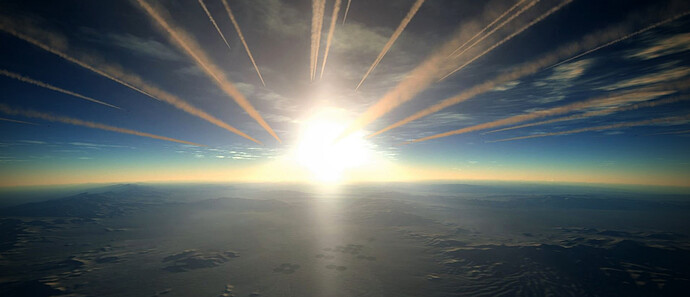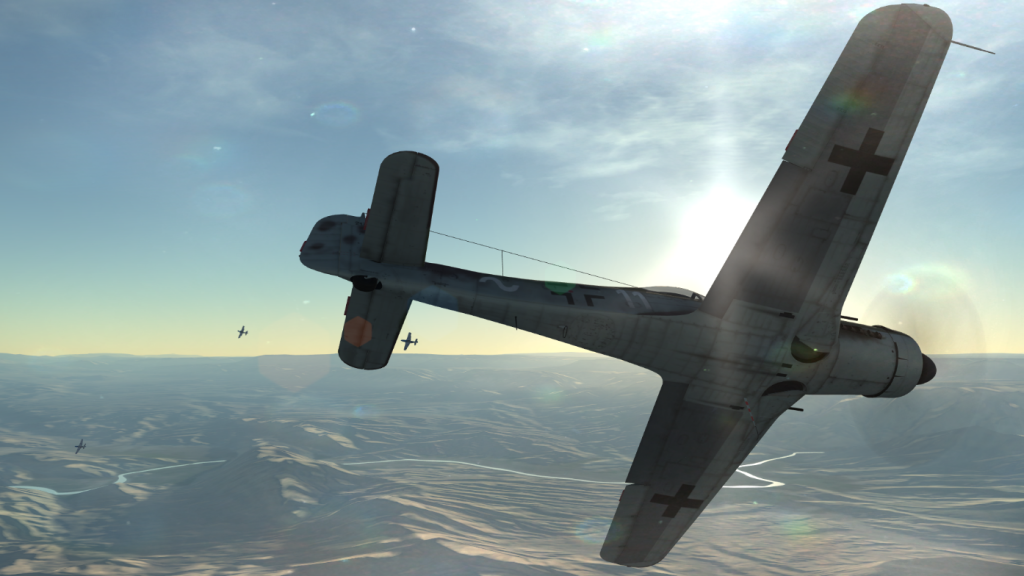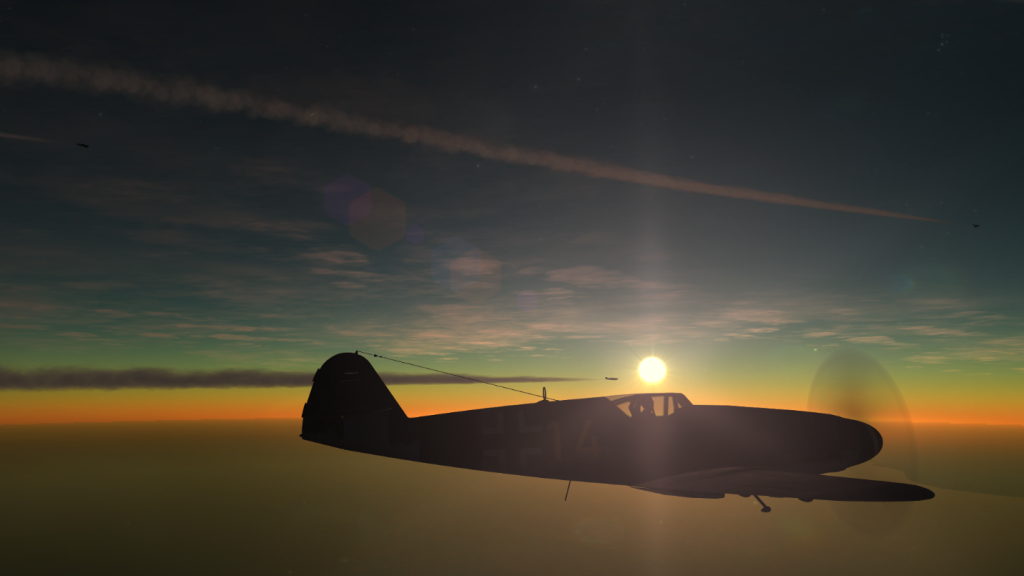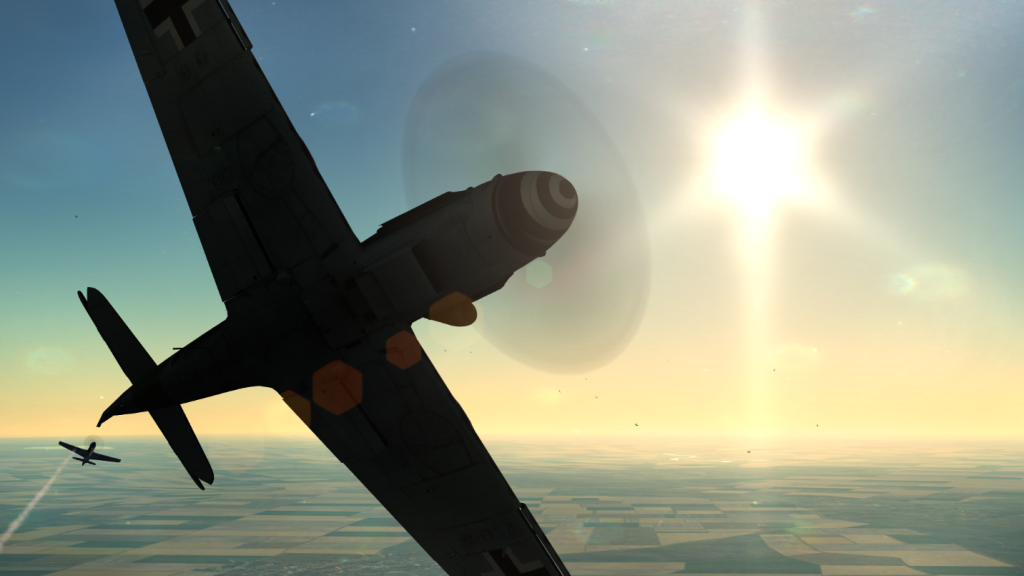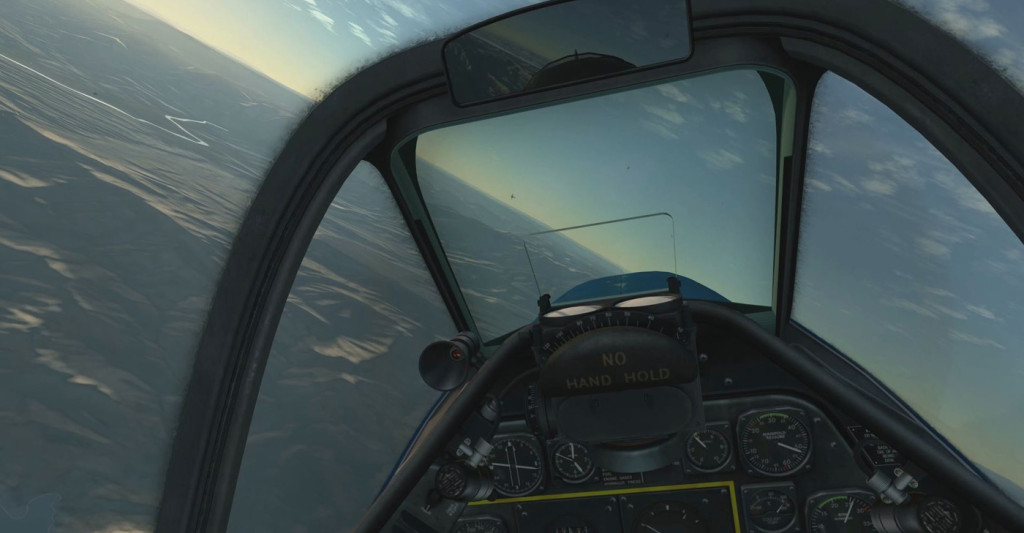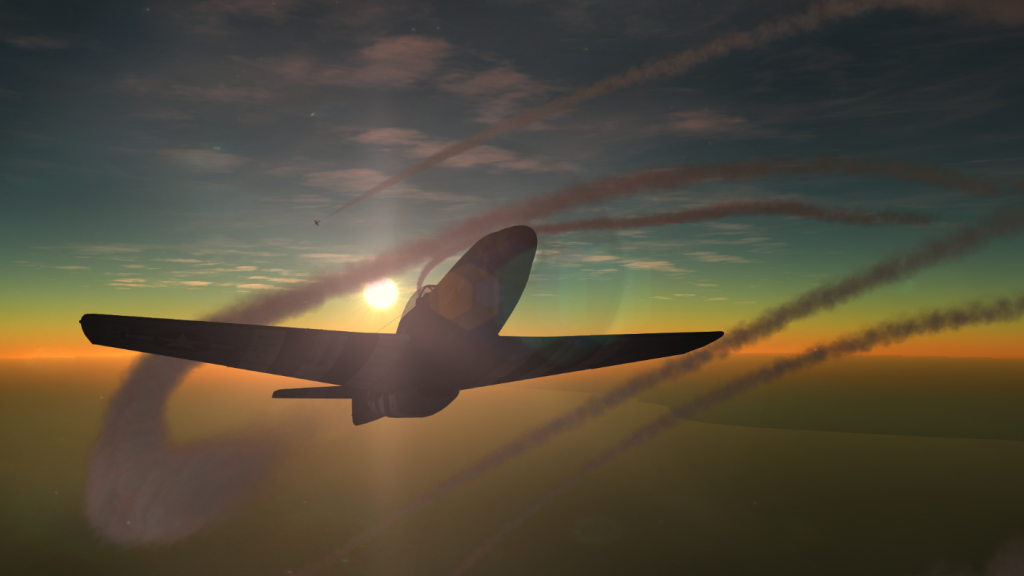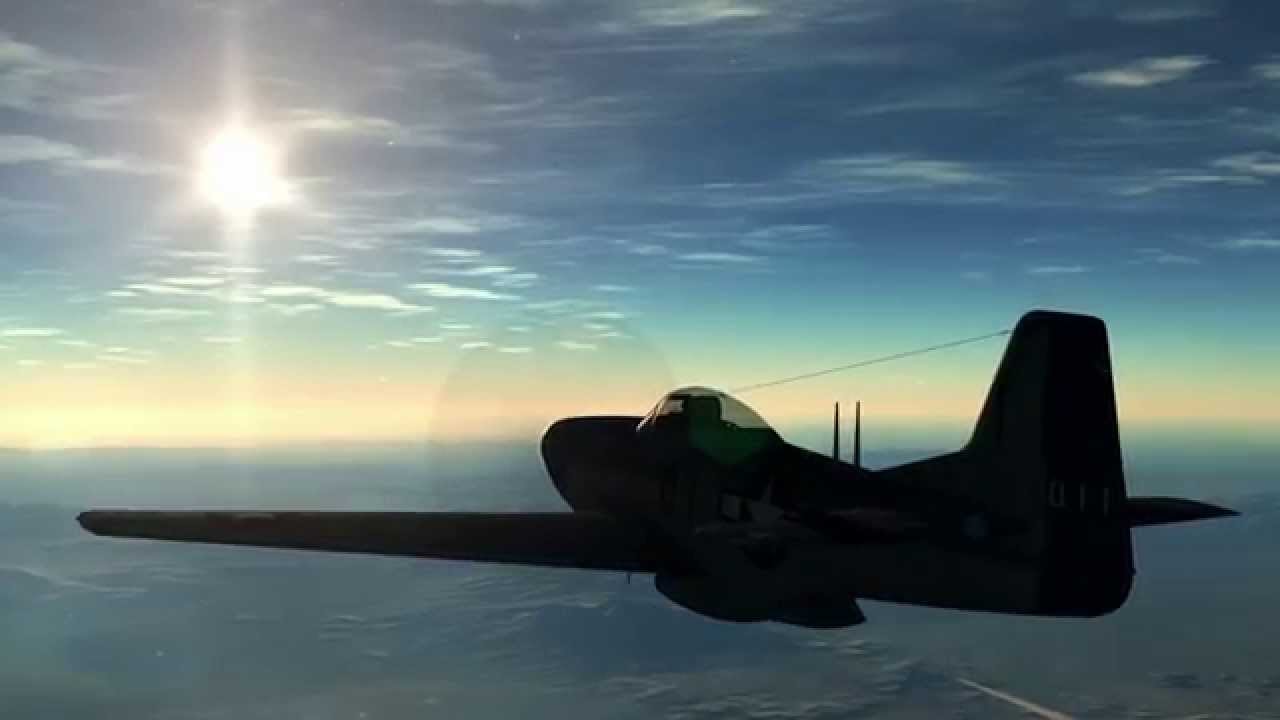DCS World 2 Preview – WWII Air Combat
By @BeachAV8R - July 13, 2015
Originally published at: Articles - Mudspike Forums
In a preview of what WWII combat in DCS World 2 will feel like, Chuck gives us some impressions on his early access to DCS World 2…
Note – this article contains images that depict a pre-alpha state of DCS World 2. Features are constantly being added, improved, fixed, and reworked, so these images may or may not represent the final product. Of particular note is that the version featured here contains old clouds that will be replaced by improved clouds. – Chuck
All observations, mistakes, or errors are solely those of the author. Features of DCS World 2 are subject to change.
A couple of days ago, I received a rather unexpected e-mail from Eagle Dynamics producer Matt Wagner, better known as “Wags” on the DCS forums. He kindly asked me if I was interested to be a part of the Tester Team for DCS World 2. Being an insatiable DCS enthusiast, I saw this as a perfect opportunity to help the developer team while doing what I love most: flying. Early access to the current DCS World 2 build included NTTR (Nevada Test & Training Range) and a most interesting selection of aircraft. In this pre-alpha preview, we will see what Eagle Dynamics has in store for World War II junkies like me.
I remember when the DCS P-51D Mustang was announced as if it was yesterday. It was the very first module that was neither a modern jet nor a helicopter, which lit the forums on fire. While the majority of community members were thrilled with the inclusion of one of the most iconic fighters of the Second World War, others were skeptical about the lack of a “proper” WWII theater, units, and plane-set. While the gradual inclusion of other fighters like the FW190-D9 “Dora” and the Bf.109K-4 Kurfürst showed great promise, a number of issues and limitations from the DCS World 1 engine made the DCS WWII experience great, but not perfect. Target spotting, framerate, and performance issues during air combat were among the chief complaints. While the sim engine could handle AMRAAM guided missiles with ease, firing six .50 cal machine-guns with tracer rounds with complex ballistic models caused in-game stutters that highlighted the need for further optimization.
Well, after a couple of sessions with the old warbirds in DCS World 2, I was very pleased to see vast improvements in terms of in-game performance, target “dot” spotting, lighting, and visual effects like oil & glycol leaks, smoke, and slick high altitude contrails.
Of course, the first thing I tried to do in the mission editor was to break the game. I placed 15 AI-flown Mustangs and pitted them against 15 Bf.109s. A similar scenario in DCS World 1 would typically bring my system to its knees the minute a plane started firing his guns, especially if all those planes were within visual range. To my surprise, I saw that the framerate was butter smooth. A new “Enlarge” setting in the game Options allowed me to see enemy fighters with a clarity that simply blew me away. Not only could I spot planes easier at long ranges, but I could also clearly distinguish its silhouette without having to zoom or change my field of view.
WWII air combat occurred at close ranges and the majority of pilots who were shot down never even saw their opponent until it was already too late. Since most air-to-air engagements were done within visual range at that time, target visibility is all the more critical. This is the difference between a multiplayer server full of “blind” pilots who can’t find each other and a server where pilots are able to scan the sky for enemy contacts and make tactical decisions based on the altitude, heading, speed, and silhouette of the contacts they spot. Thankfully, Eagle Dynamics listened to the community’s feedback and after a couple of sessions, I found out that trying to spot a target in a Mustang with the improved DCS World 2 visibility is nothing short of a complete game-changer. I always had terrible vision, but even I could spot dots from almost twice as far away. At least that’s the impression I got. I didn’t even feel the need to use the zoom in/out button anymore: it’s just that good. I felt like a real hawk soaring through the Nevada sunset, looking for dinner.
This brings us to the real meat of the article: in-game performance. Obviously, with the small number of testers I haven’t been able to stress multiplayer to a point where I would know for sure what the player limit would be. However, what I tested so far in single player is very encouraging. To give you an idea, I created a scenario where 30 Mustangs would face 15 Doras and 15 109s. With graphic options cranked up, bullets flying everywhere, and some fighters trailing smoke, oil, and coolant… I could maintain without difficulty a steady framerate whether I was yanking my stick to turn into a Messerschmitt’s head-on pass, firing my guns on a Focke Wulf, evading a hail of cannon shells ripping through the ground, or narrowly escaping death by avoiding a collision at contrail height. I would be curious to see how performance is impacted by 88mm flak once the WWII ground units are implemented, but to me the DCS World 2 engine seemed to handle projectiles and smoke effects better. Stutters are mostly gone, and the smoother performance at ground level gives a better sense of speed when you graze tree leaves at breakneck speeds. With an Nvidia GTX 970 and an i7-4770K, my DCS World 2 experience so far showed that a mission could handle more units with better graphical effects than the current DCS World 1 build. Whoever worked on optimization on the ED team truly deserves a barrel of the finest Canadian whiskey.
Dogfighting is one of the most difficult elements of flight sims to get right. Some have great visuals but arcade flight models, others have great system fidelity but poor performance. Finding the right balance between eye-candy, performance stability, complexity, and fidelity is a never-ending dilemma among flight sim developers. As a guy who has flown almost every major sim on the market, I think DCS World 2 is on the verge of achieving a major breakthrough. Not only is it a training platform that is applicable to real life flying, but it has the potential of bringing together people from the four corners of the flight sim community to fly in an environment that feels full of life and danger. The WWII fans will have Normandy and a decent selection of aircraft to choose from while the jet jockeys will have Straits of Hormuz and NTTR to fight for the skies in iconic aircraft like the Hornet and the mighty Tomcat. I can easily see communities grow up and host their own 24/7 servers. While DCS World 1 showed the possibilities of a study sim, I think DCS World 2 will popularize the genre and make it much more accessible to the general public since it feels like a smoother, prettier, and faster brand new game.
In conclusion, the World War II air combat improvements I have witnessed in DCS World 2 are:
- Lighting
- Visual Effects
- World rendering distances
- Aircraft and ground unit visibility distances
- Smoother gameplay
- Improved game performance when using weapons
- Larger air battles without performance loss
So far, DCS World 2 is everything I hoped for and more. I see a bright future for DCS. This is what we’ve been begging for: better performance, better effects and better theater/aircraft variety. Eagle Dynamics has definitely not forgotten its warbird fans and I am certainly glad they didn’t.
Chuck
Like this content? Want more of it? Let us know – we are a fledgling site and your input will help us shape our future! Add your comments: HERE!
